The first thing you should know about radiocarbon dating is that everyone gets it wrong.
Okay, I concede that this sentiment is hyperbolic and perhaps a little dramatic. I do not mean to say that everyone is wrong. And I am certainly not implying that I am the only one who is right while everyone around me has been misled. Nevertheless, I stand by my statement, dramatic as it is. For what is hyperbole if not a reflection of reality?
Indeed, there are some cases in which the various views concerning a certain topic are simply inaccurate, or else only partly true. Perhaps a controversial issue is deeper than either opposing viewpoint believes. Maybe hidden or undisclosed information prevents different sides from honest evaluation. Thus, erroneous conclusions derive from both parties. In this case, my cheap ploy to get you invested in this article is only partially true. No, not everyone is wrong, but the most common opinions on radiocarbon dating are inaccurate. The study of origins is full of topics like this; topics in which the popular talking points of creationists and the leading postulations of evolutionists are not adequate explanations of the data. It takes some extra effort and deeper research to get to the bottom of certain issues. This is one of those issues.
What is Radiocarbon Dating?
Radiocarbon dating, hereafter shortened to “carbon dating,” is a method of radiometric dating. Scientists use it to date historical artifacts, trees, and sometimes animal fossils. It remains a controversial technique among creationists because, according to conventional scientists, it can accurately date both artifacts and organic material up to 50,000 years old.1 Since young-earth creationists believe God created the universe less than 10,000 years ago, this dating method poses a challenge to the creation model.
Radiometric dating is a Nobel prize-winning concept that uses the decay rates of radioactive elements to measure the age of an object. When discovered in the early 1900s, radiometric dating caused quite the splash among scientists. Upon awarding Willard Libby the Nobel Prize in 1960, the Nobel Committee had this to say about his work on radiometric dating: “Seldom has a single discovery in chemistry had such an impact on the thinking in so many fields of human endeavor. Seldom has a single discovery generated such wide public interest.”2 We can see its impact in biology, archaeology, anthropology, history, and other fields of study.
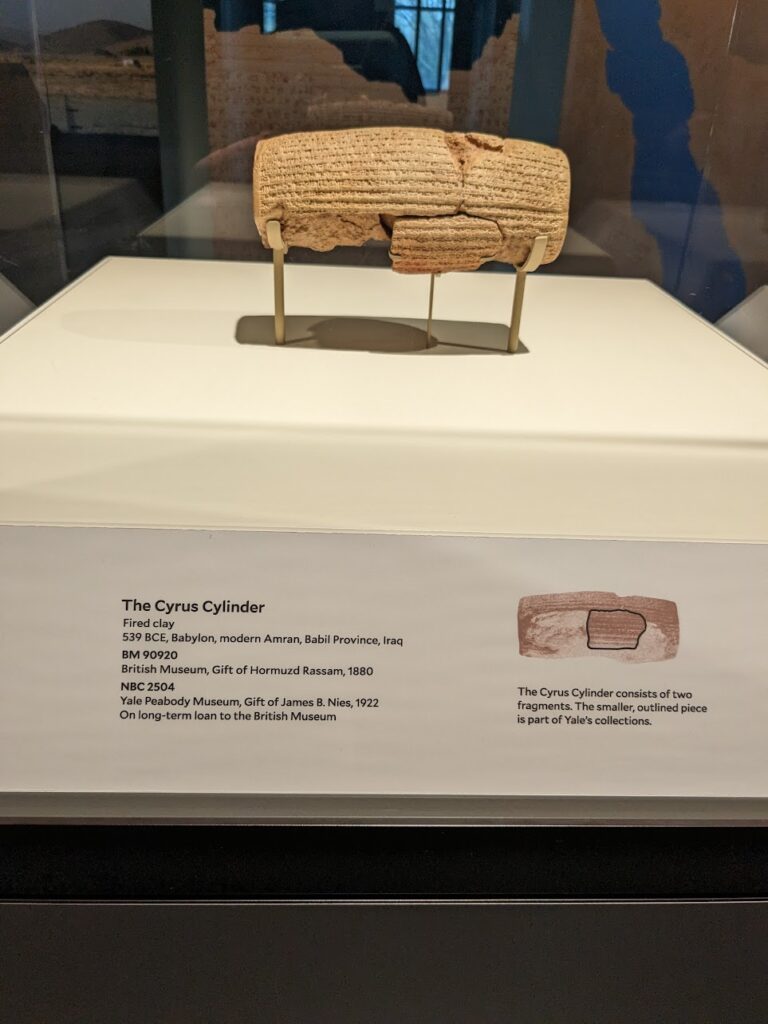
Methods of radiometric dating (carbon dating chief among them) are clearly important to conventional scientific models. But are they irrefutable proof of an old earth?
Why Everyone is Wrong
Historically, radiometric dating is a conflict for creationists. Mainstream scientists use these techniques to date their fossils or artifacts, and they accept these dates as true. Many creationists, however, dismiss these dates as faulty because they are usually much older than 6,000 years. Arguments against radiometric dating often challenge the assumptions these dating methods rely on. Central to radiometric dating is the belief that certain processes that occur today have always occurred at the same rate. But what if, cries the creationist, those processes changed in the past? After all, no one was around thousands or millions of years ago. Rejecting the assumptions of evolutionists is one way creationists dismiss radioactive decay methods as based on faulty logic or unfounded assumptions.
In reality, these dating methods are neither proof of an old earth or faulty reasoning of evolutionists. Radiometric dating is not a cause for alarm, nor an enemy we must teardown. A deeper look at carbon dating demonstrates that these dating techniques do not always contradict a young earth. They can even be recalibrated to fit a Biblical framework.
What is Carbon and How Does it Work?
While you read this, your body is receiving and releasing carbon. All of life, in fact, both intakes and expels the element. Most of the carbon is called carbon-12, because it has 6 neutrons and 6 protons (6+6=12). Carbon-12 is everywhere in our atmosphere. Occasionally, cosmic rays collide with Nitrogen-14 atoms in the atmosphere, creating radioactive carbon-14 (8 neutrons, 6 protons). Like carbon-12, carbon-14 combines with oxygen atoms, forming carbon dioxide.3 While there is far more carbon-12 in the world, there is also plenty of carbon-14 in the atmosphere and in our bodies.
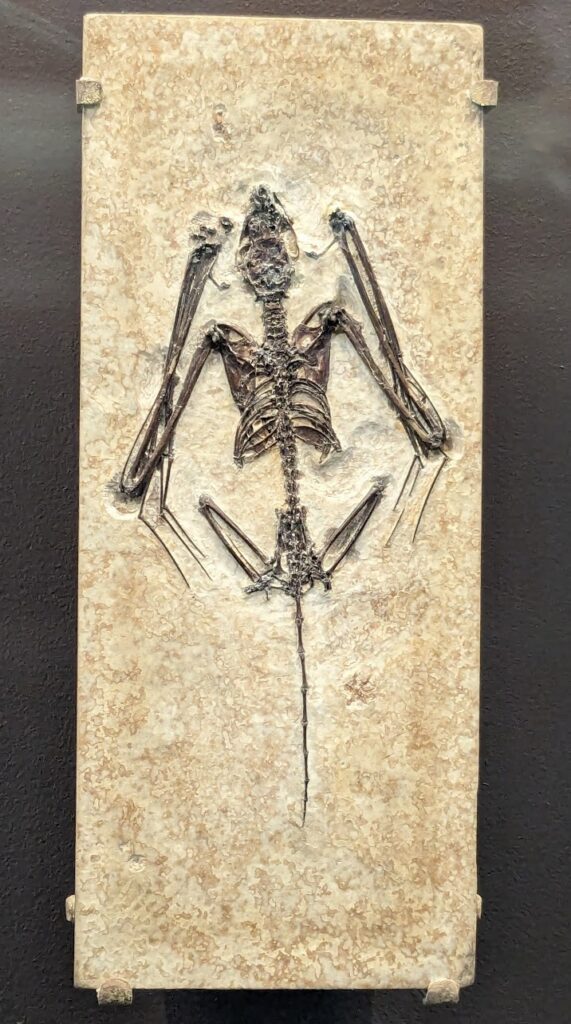
Not only is there both carbon-12 and carbon-14 in your body, but the ratio between the two is fairly consistent throughout your life. Your body expels and receives both types of carbon with equal consistency. One day (hopefully in the very distant future) you will die, and your body will cease its carbon intake. Now, carbon-14 is a radioactive element, which means it “wants” to turn back into carbon-12, its natural form. So, once your body stops taking in carbon, your carbon-14 will begin a process called “radioactive decay.” The carbon-14 will begin to expel its electrons in a process called beta decay and becomes Nitrogen-14. This is the same with all life forms. Creationists agree with evolutionists that the rate of carbon-14 decay is 5,730 years.4
Measuring the Carbon-14 Decay
There are many elements that can become radioactive and decay. Each one has a different (though constant) decay rate. We measure decay rates by the element’s “half-life”. This is the time it takes for exactly half of the “parent isotope” (i.e. carbon-14) to decay into the “daughter isotope” (i.e. Nitrogen-14). Carbon’s half-life is about 5,700 years, which means that it takes ~5,700 years for a carbon-14 sample to decay by 50%. Because of this “quick” decay rate, scientists realized carbon dating could only provide reliable dates of up to 50,000 years old. In that time, artifacts should run out of radioactive carbon-14.
So, let’s take a look at what we know. When scientists choose an artifact to date, they can determine:
- The amount of carbon-14 and carbon-12 the artifact had when it was buried (assuming that the carbon in the atmosphere is constant).
- The amount of carbon-14 and Nitrogen-14 the artifact has now.
- The rate at which the carbon-14 decays into Nitrogen-14.
Hopefully you can see how scientists get the ages they do. They can calculate how much time has gone by between when the artifact was fossilized and now. They have all the data they need.
Getting the “Correct” Dates
While the above method is how scientists measure radiometric dates, there is one more step before they can officially assign a date to an artifact or fossil. We can measure the carbon in the atmosphere, but the amount fluctuates as earth’s conditions change. Scientists must take this into account. How can they measure atmospheric carbon rates in the past? Well, atmospheric 14C/12C ratios are recorded in, of all places, trees.

When a tree absorbs carbon-12 and carbon-14, only the outermost layer of the tree stores the carbon. The inner rings of the tree do not change. As the tree grows, that outermost layer becomes an inner ring, storing its valuable carbon data for scientists to uncover later. This biological process conveniently records carbon ratios across time. Scientists can observe the carbon ratios of the past, and even the changes in ratios over time. This method of calibrating carbon dates was first used to correct carbon dated Egyptian artifacts that kept yielding dates that did not match their known archaeological ages.5 This calibration process shows that scientists cannot get perfect dates from carbon decay alone; they already must adjust their calculations based on changes in the past.
Carbon Dating and Creationism
Now, if you read the methods of carbon dating carefully, you may have noticed something. If the rate of decay for carbon means that all carbon-14 should become carbon-12 after 50,000 years, then ancient fossils from millions of years ago should have no traceable amounts of carbon-14. By contrast, if the earth is only 6-10 thousand years old, then all artifacts or fossils should have traceable amounts of carbon-14 that hasn’t yet decayed.
So, what do scientists find when they check for carbon-14 in fossils, rocks, and artifacts? Well, in 2001, a creationist named Paul Giem published an article reporting that he had found carbon-14 in every fossil he tested! Not only that, but his results suggested that the fossils he studied could not have been buried more than 25,000 years ago.6 This obviously does not fit conventional time scales, but instead opens the door for a compelling argument in favor of young-earth creationism.
Carbon Dating: Where Things Stand Today
As you may have noticed, this discovery did not immediately refute an old earth or Darwinian evolution. Evolutionists have an answer to their carbon-14 problem. They suggest that more recent carbon has contaminated the fossils, making them appear younger than they are. Scientists have even developed methods to remove the carbon-14 “contaminants” in order to get the dates that fit their model.7 Paul Giem already anticipated this answer, but this has not stopped evolutionists from dismissing this carbon-14 as contamination.8
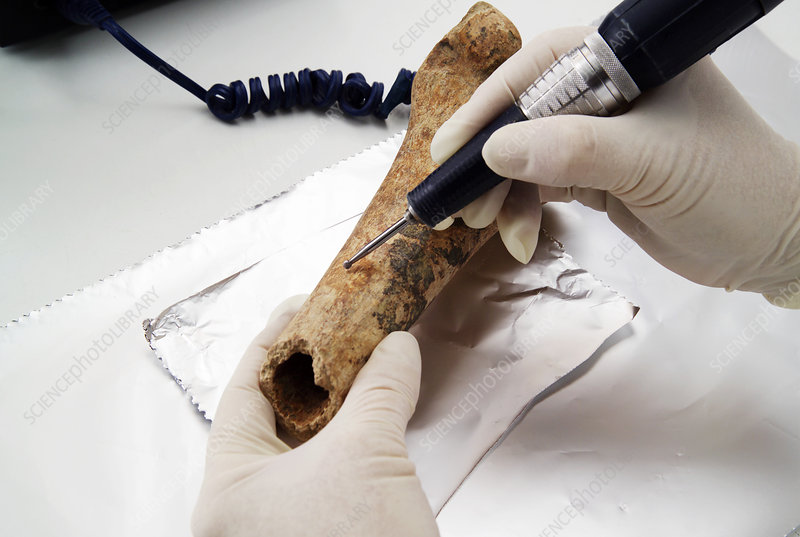
In more recent years, creationists have done deeper research into carbon dating, with some have attempted to demonstrate that the leftover carbon-14 is not contamination. Andrew Snelling, for instance, found carbon-14 in diamonds which —due to their resistance to erosion, water, or abrasion— cannot be contaminated.9 In this case, evolutionists suggest the equipment used was experiencing “background radiation”. Snelling argued that the diamonds contained varying amounts of carbon-14, even when detected by the same machine. This rules out flaws in the equipment as an explanation.
Calibrating the Clock for Creationism
Creationists are not done with radiocarbon dating. Andrew Snelling and others are attempting to calibrate carbon dating to fit a young-earth model. When carbon dating is used, it yields dates that can reach 40,000 years of age. Why? Because an underlying assumption of carbon dating is that the amount of carbon in the atmosphere has not changed drastically in the past. This is linked to uniformitarianism, the conventional theory that things today are the same as they have always been. From a creationist perspective, however, this is not the case. The worldwide flood of Noah would have dramatically reduced carbon in the atmosphere. Assuming a dramatic carbon “reset” about 4,400 years ago, followed by a gradual restoration of carbon leading up to today, creationists can (hopefully) recalibrate carbon dating to yield dates that are accurate from a young-earth perspective.

For now, however, we need not fear the older dates yielded by carbon dating. We can even trust that conventional carbon dates, while not accurate in themselves, do reflect correct chronology. In other words, an artifact dated 20,000 years old is older than an artifact dated 10,000 years old, even if those dates are not quite accurate. Thus, creationists can infer data from carbon dating even without “fixing” the dates to fit the young earth model.
Calibrating Our Views on Carbon Dating
Conventional archaeologists, evolutionists, and geologists cite carbon dating as an accurate dating technique. While the technique itself is valid, there is reason to believe the dates are miscalculated. Many creationists reject carbon dating as a whole, because it seemingly yields ages older than 10,000 years. Just like carbon dating itself, both views of carbon dating are in need of recalibration. Carbon dating is a sound method that will yield different dates depending on what assumptions are fed into it. Creation researchers have yet to perfect these calibrations, but the presence of carbon-14 in artifacts is encouraging evidence that the earth is not millions of years old.
The discussion of carbon dating’s role in the age of the earth is not over. Creationists will work to fit carbon dating into their model, while conventional scientists will continue to accept carbon dating results. Is everyone still wrong? Well, yes. But perhaps “wrong” is too harsh a word. A more accurate–and gentle–description could be “in need of some recalibration.”
But hey, who isn’t?
Footnotes
- Parui, Kaushick. (2019). Age Determination by Radiometric Dating. ↩︎
- Bhattacharya, Shreetama. (2021). Carbon Dating. ↩︎
- Parui, Kaushick. (2019). Age Determination by Radiometric Dating. ↩︎
- Baumgardner, J. (2005). 14C Evidence for a Recent Global Flood and a Young Earth. ↩︎
- Bhattacharya, Shreetama. (2021). Carbon Dating. ↩︎
- Giem, P., & M., D. (2005). CARBON-14 CONTENT OF FOSSIL CARBON. ↩︎
- Bird, M. I., Ayliffe, L. K., Fifield, L. K., Turney, C. S. M., Cresswell, R. G., Barrows, T. T., & David, B. (1999). Radiocarbon Dating of “Old” Charcoal Using a Wet Oxidation, Stepped-Combustion Procedure. Radiocarbon, 41(2), 127–140. ↩︎
- Bhattacharya, Shreetama. (2021). Carbon Dating. ↩︎
- Snelling, Andrew. (2007). Radiocarbon in Diamonds Confirmed. Answers in Depth, Vol. 2(2007), pp. 158–159. ↩︎

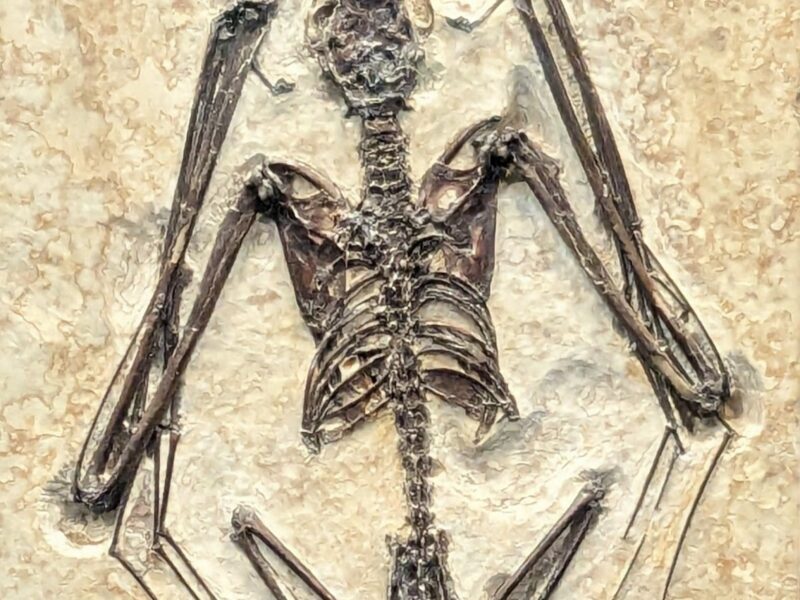
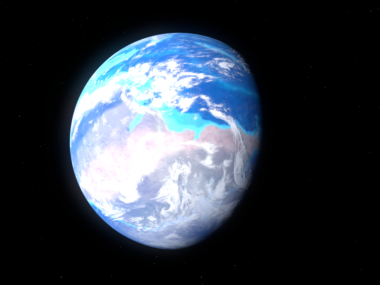
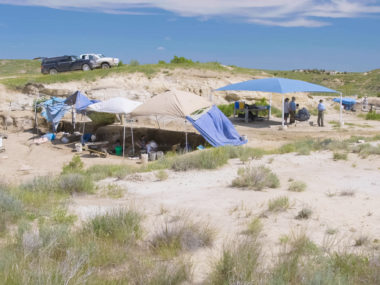


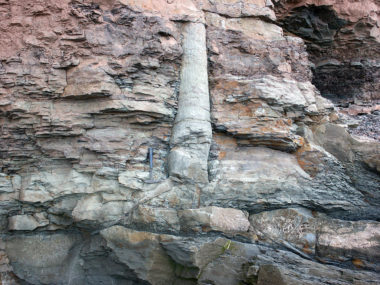
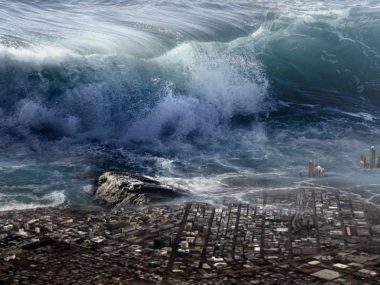




Half life of C14 is 5730+or-30, not 7500
I can’t find a reference to 7500. I believe the author rounds the half life to 5700. Am I missing something?
Thank you for your feedback. The 7500 date was a mistake, it was supposed to be 5700 (rounded from 5730). This has been corrected. Good catch! Thank you for reading and commenting.
It is important to know that carbon dating is calibrated based on tree counts. Go to Beta Analytics company and they describe the process.
https://www.radiocarbon.com/tree-ring-calibration.html
The link is incorrect (should be htm, not html). It is:
https://www.radiocarbon.com/tree-ring-calibration.htm
Which is the C-14 decay rate? First you say “…the rate of carbon-14 decay is 5,730 years.3“, then the next paragraph says “it takes ~7,500 years for a carbon-14 sample to decay by 50%.”
Hi Tom, thanks for the comment. 7500 was an error, it was supposed to be 5,700 (rounded down from 5,730). It has been corrected.
1) If radioactive carbon saturation takes at least 50k years to reach global equilibrium, then how can anyone expect to find a reasonable baseline to measure a sample against?
2) if only old earth compatible results are selected from carbon dating, throwing away all of the younger measurements as assumed errors, then how can you reasonably expect those results to be accurate determine if one sample is older than another sample? Are they not samples of based on anomalies?
I really enjoyed this article. I have often wondered about carbon dating and you have helped me to understand it. Praying for God to raise up creation science warriors and for revelation of God’s immutable, beautiful world.
Jake, thanks for your interesting article. I agree with your approach and hope we can get to a “past earth atmosphere” calibration capability.
One question on your explanation on how C-14 is formed. You stated it formes when carbon-12 “collides with a pair of neutrons in just the right way” to form C-14. I was taught it came about from Nitrogen molecules that were exposed to cosmic radiation. This seems to be the consensus view of the various websites I reviewed.
Comments ?
Hello John, thank you for reading and commenting! Carbon-14 does come from Nitrogen molecules exposed to cosmic radiation. My explanation relied on an overly simple explanation of the process. The error has been corrected, and I put in a footnote where you can read a more detailed description of the process. Good catch and thank you for the feedback!
Carbon-14 is NOT created by a Carbon-12 nucleus catching 2 neutrons. This cannot work, because it would need 2 neutrons colliding with the nucleus at the same time and some additional emitted particle(s) to carry the excess energy of the collision away. Instead, a Nitrogen-14 nucleus is hit by a neutron, which kicks a proton out and stays inside the nucleus, resulting in a Carbon-14 nucleus. Carbon-14 decay works via beta- decay, one of its neutrons turns into a proton by “getting rid” of negative charge and energy via emission of an electron and a neutrino, resulting an a Nitrogen-14 nucleus.
I agree with Mr. Curtis that your article approaches the subject in a fair and thoughtful way. But there are some “recalibrations” needed.
First, it’s my understanding that with the latest spectrometers, molecules can be counted accurately down to the last one, and that allows carbon dating experts to “accurately” (given their presuppositions) to almost 100,000 years.
Second, carbon dating cannot be used to date rocks. Only living things take in and expel carbon. So the statement, “what do scientists find when they check for carbon-14 in fossils, rocks, and artifacts? is inappropriate.
It would also have been nice to have pointed out the difficulties of aging trees by their rings, and also the documented fluctuation between carbon 14/12 ratios in tree rings of the same assumed age.
Finally, I agree with Mr. Curtis that your explanation of how Carbon 14 is formed is flawed. It is actually formed in the upper atmosphere from Nitrogen 14, not Carbon 12. The Suns rays dislodge neutrons from various molecules and they float freely unless taken on by other molecules. The 14N molecule is capable of absorbing a free neutron. When this happens, the 14N molecule expels a proton, leaving 6 protons and 8 neutrons, carbon 14.
I apologize for pointing these things out, but I know that you would want to be accurate when defending the authority of Scripture. All the best to you in your efforts
Hello Don, thank you for reading and for your feedback. Never apologize for pointing out incorrect claims!
First, most experts I’m finding say 40-50,000 years, but perhaps more up-to-date spectrometers have expanded that range to 100,000yrs. You could check out the literature in the footnotes for more info. Second, rocks can be “dated” by carbon dating through organic material such as coal or other living compounds found in rock. I probably could have been more specific about that. Third, there are definitely some challenges with tree ring calculations. That would have been interesting to get into, but this article was more of a general overview of carbon dating. Maybe we’ll take on tree rings in a future article! Finally, the carbon-14 formation explanation was an error on my part, and I have updated that explanation with a footnote to a more detailed description of the process.
Thank you again for your comment!
You said that conventional scientists think that carbon dating is accurate up to 50,000 years. How is it possible then that they date fossils to millions of years ago? Are they using a different method besides carbon dating?
They must be, because it seems they assumed those old fossils didn’t have carbon in them and any carbon in them must be from contaminants. So what method of dating do they use that they think is accurate for millions of years ago?
Hello Tim, scientists use other decay processes that have longer half-lives than carbon. Potassium-argon dating relies on radioactive Potassium-40, which decays into argon-40. The half-life of potassium-40 is 13 billion years. Uranium-lead dating is believed to date crystallized rocks over 4 billion years old. Rubidium-87 decays into strontium-87 with a proposed half-life of 50 billion years! There are other radioactive decay processes as well. I hope this helps. Thank you for reading and commenting!
I enjoyed this article in an easy reading type that I could understand. Thank you to the author who thought of the common man that has no knowledge of scientific terms.
God Bless
I’ve always wondered about the accuracy of half lives for the long duration isotopes. For a short duration isotope the observation time to determine the half life is going to yield an accurate reading to plug into the mathematics. But for a long duration isotope is there going to be a statistically sensible difference in counts per minute or whatever at either end of the observation period to yield an “accurate result”. In other words if using a long duration half life isotope for radiometric dating you are likely in error before you start never mind the problem of a non closed system.
I had seen a program years ago on discovery channel where they radiocarbon dated a freshly killed seal and it said it was over 10k years old, which obviously wasn’t true. They said it wasn’t always totally accurate back then. Sometime in the 90s they filmed it.
Good article, You may want to correct the decay of carbon-14. It decays to nitrogen-14 via beta decay.
Hello Ronald. Noted and corrected. The carbon dating relies on C-14/C-12 ratios of the past, but carbon-14 does decay into Nitrogen-14, not carbon-12, which is a common mistake. Thanks for reading.
Spoken like a fool.
Blind leading the blind
Completely ignorant of the real facts and stats
There’s 1000’s of examples of how inaccurate all the dating methods are.
All dating methods 100%
I suggest you watch some Kent Hovind seminars or Ken Ham seminars or debates as you’ll see plenty of samples that were taken from living samples like the shell of a living snail or clam, and it’s carbon dated to 1000’s of years old to over 100,000 years old
Living examples not ones found in the ground or from sample that they know that actual date of the material
You’re obviously ignorant of these facts and statistics that disprove your dating methods.
All due to how blind you are because of your own belief that dating methods actually do work and you’re desperately trying to prove this belief.
It doesn’t matter how well you explain how something works,,,
If it cannot accurately date something you know that age of, it’s 100% false and any date that is given by the method is just a selected dated that supports that persons belief.
Radiometric dating relies 100% on the fossil record which has been proven false to what the evolutionists believe it is.
I suggest you do more research on what’s available to disprove your dating methods, instead of trying to convince us that it works through a detailed explanation of how the process works.
Facts are facts and there’s too much real stats against your belief that these methods works
They don’t 100% regardless of how much you try to explain the process in an attempt to convince people that they do work.
When a person sees the truth about something, you’ll never convince them with a lie
Friend, there are a couple things I desire to speak upon, despite the age of this article.
1) Calm thyself. At the end of the day, both you and the author have the same belief: Creationism. Whether or not you believe that dating methods are fully or partially inaccurate. You’re making it sound like the man’s a heretic. That’s like me shooting someone because they said they’re a Molinist.
2) Use some critical thinking and logic. If we have thousands of scientists across the globe all saying that dating is reliable, it’s very unreasonable to assume they’re all collectively either completely wrong, or if you’re an extremist, plotting against Christianity. To say that all dating methods are 100% wrong is just ignorant.
3) Recognize that your examples are imperfect. Kent Hovind especially, from what I hear, has some very hot takes that most Creationists disagree with. Having watched him for a long time, I agree. He’s ignorant, stubborn, and prefers ad hominems to actual arguments. I can’t speak for Ken Ham, but Kent is a wild child. The examples you use are common among people like Ken and Kent, and in those cases, usually they purposefully refuse to account for different variables in order to make dating look bad. Your, “1,000,s of examples,” are sketchy at BEST.
4) Remember this is not a topic to get too zealous about. This is not a matter critical to one’s faith. You both believe that Jesus Christ is the Son of God, and that he died for our sins and rose again on the third day. Too many people act like if you don’t believe in a literal 6 days, you’re a spawn of Satan that Heaven has no place for. The author doesn’t even believe in Evolution, and you’re acting like he just renounced the Lord.
People like you give Christianity a bad name. You force your beliefs without regard, and insult those who disagree on unimportant matters. You have an obligation to live as Christ lived, and you can’t even act that way to other Christians. Jake made a paper talking about how Evolution was flawed, and the best thing you can do is call him a fool. Do better, friend, and I’ll be praying for you.
The problem I have with this is when contamination gets dismissed as a “rescuing device” or something “evolutionist.” There’s nothing “rescuing” or “evolutionist” about it whatsoever: every form of measurement has sources of error that need to be accounted for and quantified, and contamination is just one example of one such source of error. This is just standard practice in every area of science, and in fact it is the first thing that you get taught in the first practical class of any high school or first year university physics course that is worth its salt.
It’s also not clear why varying amounts of carbon-14, even when detected by the same machine, should rule out flaws in the machine. That could just indicate the kind of random error that you would expect from every kind of measurement, especially if the values are low.
What kind of values and what kind of sample sizes are we talking about here? A sample of 1 milligram of CO2 with 0.1% modern carbon (representing an age of 57,100 years) will contain just 16,000 atoms of carbon-14. Getting contamination levels down that low will be a pretty impressive technological feat. IIRC some of the figures cited in the RATE project were less than a tenth of that.
You have provided many good points about the dangers of radiocarbon dating. I have compiled many similar evidence to show that Goberkli Tepe is wrongly dated 9134 BC. If the false radiocarbon date for Gobekli Tepe is recognized you will actually see that the images at Gobekli Tepe are about the Flood hero Gilgamesh. You see our starting article at http://www.guiculture.com/goblekic14.htm Creationists are right afterall!
Done statistical comparisons between calendar dates and radiocarbon dating for many ancient sites. Correlation coefficient is 0.9419, which proves that high ages radiocarbon dated are wrong, caused by contamination by limestone. See this at https://guiculture.com/qgodc14wrong.htm.;previous site name wrong] The link also shows that the images at Gobeklie Tepe was about Gilgamesh the Flood hero. Creationists are right!
Trying to re-calibrate a measurement to get an answer you already have in mind is the opposite of science. If you’re going to change methods until you get the answer you want, why bother involving science at all?
I’d also love to see this apparently common scientific mistrust of carbon dating somewhere besides creationist scientists. Most reputable scientists understand that carbon is not supposed to be used to date older artifacts. That’s where other elements like potassium are used to date things. I see no mention of other methods of radio isotope dating in your article, despite those being crucial caveats to carbon dating.
I’m also curious why you think a global flood would reduce carbon. There is plenty of carbon in the ocean, and we have plenty of dateable sea fossils who were preserved rather than destroyed by things like flash flooding.
Hello Lee, thank you for reading. I have a few thoughts. First, I do not think creationists are calibrating carbon dating to fit what they already believe. My point is that carbon dating is a process that reveals information about the past, and if we start from certain assumptions, we get certain results. In other words, the current conventional scientific model is assumed in order for carbon dating to work. If we use different starting assumptions, we will get different results. The methodology can give you correct dates depending on which model you take to be true. In contrast to your second point, I think this position actually restores trust in carbon dating for creationists, because it shows that the methodology of carbon dating is sound. Take a look at other comments here; some creationists mistrust dating so much they want to abandon it altogether, whereas my suggestion is that carbon dating works and works well.
Also, I probably should have mentioned the other dating methods in this article. Others have commented asking about them. I simply thought those will be another article for another day. But carbon dating is the most recognizable method to a general audience, so I thought I would tackle it individually. And as for your point on carbon in the oceans, that is a great question. Andrew Snelling proposed a type of carbon reset during the flood as a potential model, and that’s what I am citing here. But that model could be wrong, in which case more model-building from creation geologists is needed.
I hope this clarified some things. Thank you again for reading!
Let’s also get more than one source for the claim that there was carbon 14 in all tested fossils. If one singular guy has a result that goes against what every other scientist did and his work has never been replicated, I’m inclined to think he did something wrong.
Hello again Lee, other scientists did not dispute the presence of carbon-14 in fossils, but they did suggest that it was contamination (see my footnotes above). My source from Baumgardner (2005) is another independent study finding carbon, this time in coal and diamonds. Because carbon-14 is generally thought to be contamination, there are not many papers discussing carbon-14 in non-creationist settings. But here is another citation referring to carbon-14 presence as contamination, in addition to those in my footnotes:
Nadeau, M.-J., P.M. Grootes, A. Voelker, F. Bruhn, A. Duhr, and A. Oriwall. 2001. Carbonate 14C background: does it have multiple personalities? Radiocarbon 43:2A, 169–176.
It is not just the cleaning process which may contaminate the samples. What radiocarbon enthusiasts overlook is that organisms source their carbon from various sources where some of them like in deep waters and limestone areas have low C14 carbon. These entered into the biological structures of organisms. The radiocarbon dating will detect the low C41/C12 ratio which will give rise to spurious high age of the organisms.
The danger of such incorporation of low C14 carbon into organisms have been pointed out in the past. See – Consequent errors of shell radiocarbon dates may be as large as several thousand years for river shells. (Radiocarbon Dating: Fictitious Results with Mollusk Shells. M. L. Keith and G. M. Anderson Science 16 Aug 1963 Vol 141, Issue 3581 pp. 634-637)